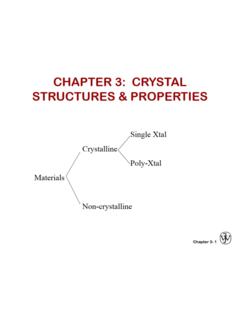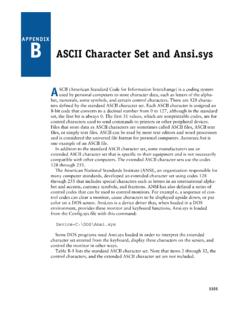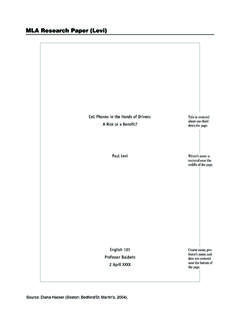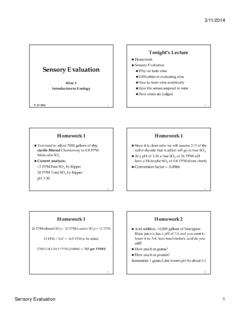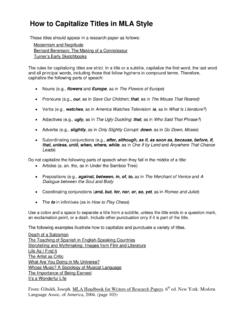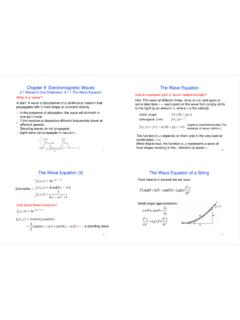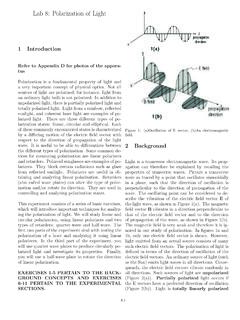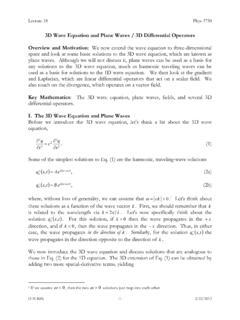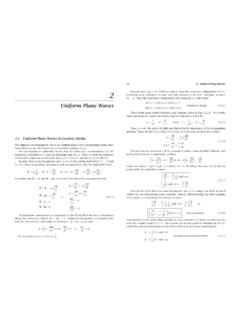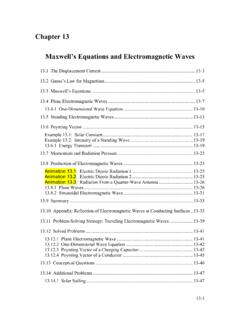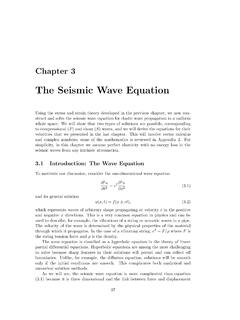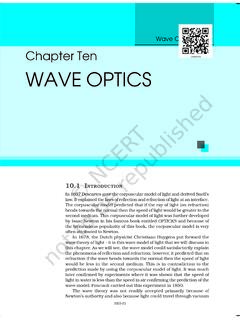Transcription of Simple Derivation of Electromagnetic Waves from Maxwell’s ...
1 000 0 EBBEEB ttSimple Derivation of Electromagnetic Waves from Maxwell s Equations By Lynda Williams, Santa Rosa Junior College Physics Department Assume that the electric and magnetic fields are constrained to the y and z directions, respectfully, and that they are both functions of only x and t. This will result in a linearly polarized plane wave travelling in the x direction at the speed of light c. ( , )( , ) and ( , )( , )E x tE x t jB x tB x t k We will derive the wave equation from Maxwell s Equations in free space where I and Q are both zero.
2 Start with Faraday s Law. Take the curl of the E field: ( , ) =0( , )0ijkEE x t jkxyzxE x t Equating magnitudes in Faraday s Law: (1)EBxt This means that the spatial variation of the electric field gives rise to a time-varying magnetic field, and visa-versa. In a similar fashion we derive a second equation from Ampere-Maxwell s Law: Take the curl of B: 00 ( , ) = (2)00( , )ijkBBEB x t kjxyzxxtB x t This means that the spatial variation of the magnetic field gives rise to a time-varying electric field, and visa-versa. Take the partial derivative of equation (1) with respect to x and combining the results from (2): 220 00 022 = EBBEExx tt xttt 220022 EExt (3) In a similar manner, we can derive a second equation for the magnetic field: 220022 BBxt (4) Both equations (3) and (4) have the form of the general wave equation for a wave ( , )xt traveling in the x direction with speed v: 222221 xvt.
3 Equating the speed with the coefficients on (3) and (4) we derive the speed of electric and magnetic Waves , which is a constant that we symbolize with c : 8001 10/cxm s The simplest solutions to the differential equations (3) and (4) are sinusoidal wave functions: maxmax( , )cos() (5)( , )cos() (6)E x tEkxtB x tBkxt where k = 2 / is the wavenumber , = 2 is the angular frequency, is the wavelength, f is the frequency and /.kfv c . Taking partial derivatives of E and B and substituting into (1): maxmaxsin()sin() kEkxtBkxt maxmaxmaxEBcBk .EcB At every instant, the ratio of the electric field to the magnetic field in an Electromagnetic wave equals the speed of light.
4 The rate of energy transfer by an Electromagnetic wave is described by the Poynting vector, S, defined as the rate at which energy passes through a unit surface area perpendicular to the direction of wave propagation (W/m2): B For a plane Electromagnetic wave: 22000 EBEcBSc . The time average of S over one or more cycles is called the wave intensity, I, which gives the very important result that the intensity of a light wave is proportional to the square of the amplitude of the electric or magnetic fields: 22maxmax0022aveEBIScc (The comes from averaging the cosine squared terms.)
5 Intensity is a measureable real quantity that has primary significance in all wave phenomena. Intensity is the loudness of a sound or the brightness of a light. Intensity will serve as an important conceptual analog in our study of quantum physics in the following way: Intensity is to the electric field as probability is to the wave function. Yum! maxmaxsin() and sin() EBkEkxtBkxtxt
